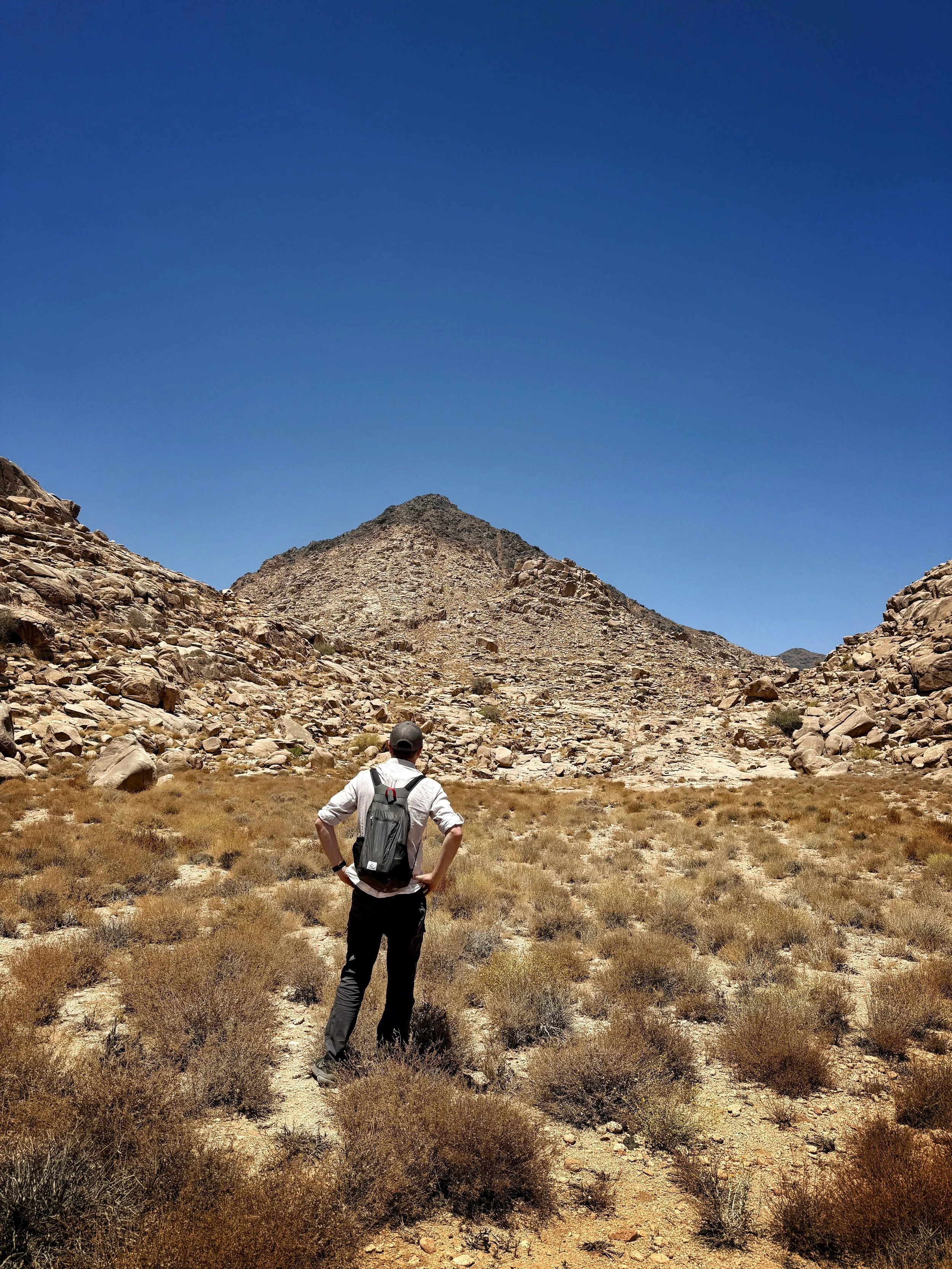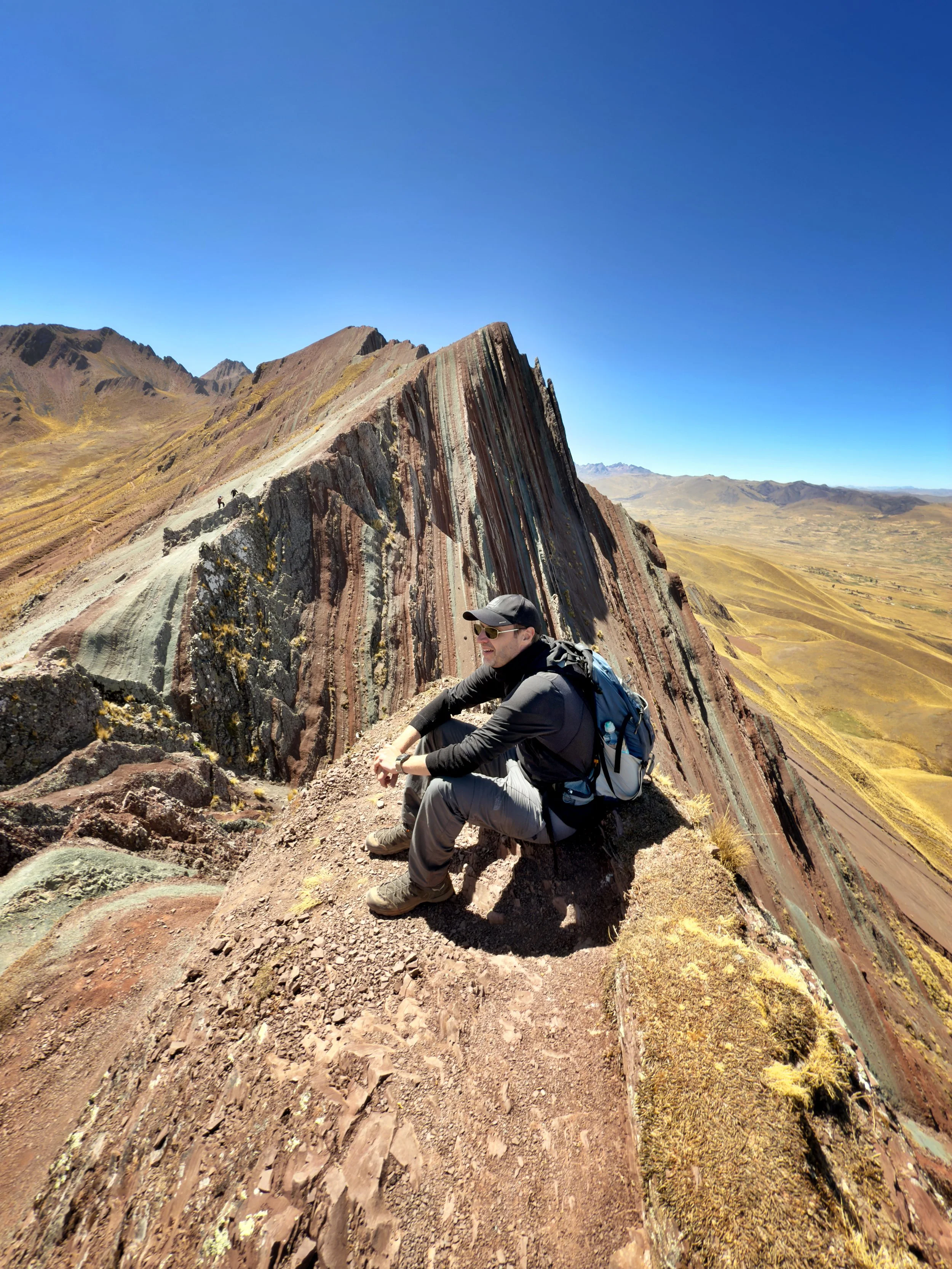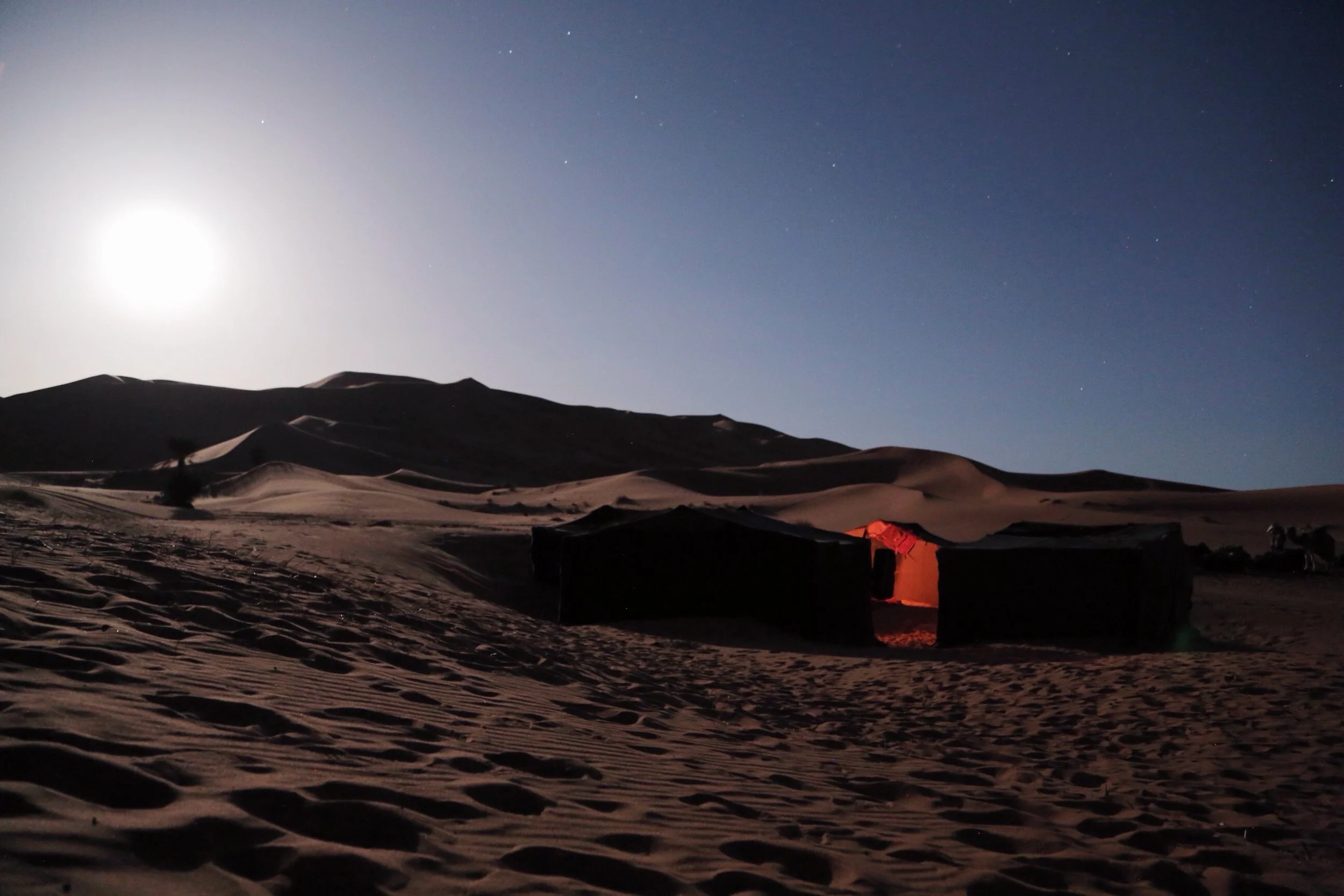When Moses descended from Mount Sinai after receiving the Law, he discovered Israel worshiping the golden calf. As a consequence, the Levites were commanded to execute judgment, and about three thousand people died that day as a result of their rebellion against God’s covenant. This moment reveals the seriousness of sin and the holiness of God’s Law — a standard no one could keep perfectly but was meant to reveal humanity’s need for a Savior.
Morals
In an age that prizes goodness over godliness, one of Satan's most effective deceptions has not been rebellion against truth—but the imitation of it. The devil is not offended by goodness. He isn't threatened by kindness, generosity, or even religious devotion. What he opposes with all his might is surrender to Jesus Christ. The world applauds morality but shuns Christianity. Culture will celebrate "good people" who serve others, protect the planet, and promote unity—but mock those who proclaim repentance and faith in Christ. That confusion is not accidental. The enemy's oldest lie has simply learned a new language: that morality equals righteousness. But without Christ, goodness is hollow. Satan doesn't care if you live by high principles, as long as you don't bow to the name that saves. He doesn't care if you follow rules, as long as you ignore redemption. His goal is to make people self-sufficient. To keep them moral—and lost.
Convictions
There is an ocean of difference between a conviction and a preference. Preferences are the fair-weather friends of faith—guiding choices as long as they cost little. Convictions are forged in the fires of testing, held to even when misunderstood, mocked, or threatened. In an age obsessed with blending in, where the pressure is immense to keep convictions confined to the “private,” the follower of Jesus is called to something braver—a rock-solid willingness to stand for truth, no matter how strong the headwinds.
Jude’s urgent plea still rings: “Earnestly contend for the faith which was once delivered unto the saints” (Jude 1:3). This is not a time to be silent or slip into spiritual neutrality. Gospel witness demands a backbone—a heart willing to stand for what matters, even if standing means standing alone. Below are worthy convictions that Christians should be ready to defend.
Signs
Watching for the Signs: Israel as a Prophetic Timepiece
Scripture calls believers to be discerning of the times, echoing Jesus’ words: “When you see these things happening, you will know that the kingdom of God is near” (Luke 21:31). From Genesis to Revelation, the nation of Israel stands at the center of God’s prophetic timeline. The Lord declared, “I will gather you from all the nations and bring you back into your own land” (Ezekiel 36:24). Since 1948, Israel has been restored as a nation, and God's prophetic timepiece moves steadily closer to His return.
Not only has Israel become a nation, but preparations are underway for the rebuilding of the Third Temple in Jerusalem. Organizations like the Temple Institute have spent over three decades reconstructing sacred vessels—golden menorahs, silver trumpets, priestly garments, and the altar—all perfectly matching biblical specifications. Levites and Kohanim (priests) are now being trained to serve the Temple again, fulfilling the ancient instructions given in Exodus and Leviticus.
New Frontiers
Every generation reaches a threshold—a point where what was once familiar ends and something new begins. In these moments, the well-worn paths disappear, and only faith, courage, and the Holy Spirit can carry us forward. History records that God often meets His people at such crossings, inviting them to leave comfort behind and trust Him in uncharted territory. The edges of the known world have always drawn a certain kind of pioneer: those who sense that spiritual breakthroughs lie on the other side of fear and uncertainty. From ancient wanderers gazing toward a land of promise, to courageous men and women challenging the powers that be, the advance of God’s kingdom has never belonged to the timid or the reluctant. True progress—spiritually and historically—arrives when ordinary people, relying on God, dare to step past the limits of their experience.
Evidence
Evidence: Tracing the Exodus in Saudi Arabia
In recent decades, the landscape of biblical archaeology has shifted in remarkable ways. Over the last thirty years, a surge of discovery has brought new light to the ancient stories of the Exodus, pointing with increasing clarity to the rugged mountains and valleys of northwest Saudi Arabia as the true backdrop of these events. Much of this renewed attention began with the archaeological journeys of Ron Wyatt in the 1970s and 80s, who, following in the footsteps of Charles Beke, John Philby, and Alois Musil, suggested Arabia as the real site of the Exodus. Through Wyatt’s expeditions, sites such as Jabal Maqla and the region of ancient Midian—now known as Al Bad’a and its surroundings—have come into focus as the likely locations of the Red Sea crossing, the mountain of God, and the wilderness wanderings. What once seemed lost to history is now being revealed, stone by stone, spring by spring, altar by altar. The evidence is mounting, and it is compelling. Even the Apostle Paul, writing under the inspiration of the Holy Spirit, anchors this truth for us: “Now Hagar stands for Mount Sinai in Arabia...” (Galatians 4:25). With this scriptural foundation and a growing consensus among explorers and scholars, we step forward to recount our journey—site by site—through the land where the echoes of Exodus still ring, and where God’s faithfulness is etched into the very earth.
Legacy
In the grand tapestry of eternity, our earthly lives represent but a single thread - yet what a profound thread it can be when woven with eternal purpose. The Apostle Paul understood this when he wrote, "I press on toward the goal for the prize of the upward call of God in Christ Jesus." — Philippians 3:14. True Christian living demands that we set our sights beyond the temporal horizons of our own existence and consider the eternal impact of our choices, our investments, and our influence. Legacy, in the biblical sense, isn't about monuments carved in stone or achievements recorded in history books - it's about the spiritual inheritance we leave behind, the faith we transfer, and the kingdom work that continues long after we've been called home. When we live with eternity's values in view, every relationship becomes a discipleship opportunity, every season of life becomes a chance to mentor, and every blessing becomes a stewardship responsibility. The question that should awaken and inspire every believer is this: when our race is finished and our course is complete, who will carry the torch forward? This is the sacred calling of legacy - to live not just for our own spiritual advancement, but for the advancement of God's kingdom through those who will follow in our footsteps.
Fight
Scripture reminds us that “Our struggle is not against flesh and blood, but against the rulers, against the authorities, against the powers of this dark world and against the spiritual forces of evil in the heavenly realms.” — Ephesians 6:12. The enemy’s greatest weapon is deception. He whispers lies of inadequacy, fear, and compromise, hoping that we will surrender the ground Christ has already won for us. He tempts us to give in to discouragement, to accept defeat, to believe that our struggles are pointless or that our prayers go unheard. But the truth is this: the enemy has already been defeated at the cross. Jesus declared, “It is finished,” and in that moment, every scheme of the devil was rendered powerless for those who are in Christ. Still, the battle continues, not for victory, but from victory. The enemy’s only hope is that we will forget who we are and to whom we belong.
Staying the Course
In our walk as Christians we often encounter challenges that test our resolve and shake our confidence. Yet, as believers, we are called to persevere, to stay the course even when the path seems uncertain or the odds appear stacked against us. This steadfastness is not about stubbornness or blind faith, but rather about trusting in God's wisdom and timing, even when our limited understanding fails us.
Embracing Uncertainty with Faith
Life is full of uncertainties, and we often make decisions based on incomplete information, leading to unexpected outcomes. However, this uncertainty should not paralyze us or cause us to doubt God's plan. Instead, it should draw us closer to Him, seeking His guidance and wisdom. As Proverbs 3:5-6 reminds us, "Trust in the Lord with all your heart and lean not on your own understanding; in all your ways submit to Him, and He will make your paths straight." This scripture emphasizes that while our understanding is limited, God's wisdom is infinite. By embracing uncertainty with faith, we open ourselves to God's guidance and allow Him to direct our paths.
Adventure in Missions
The Call to Adventure: Hans Egede’s Mission to Greenland
In the early 18th century, a young Norwegian Lutheran minister named Hans Egede became captivated by a haunting mystery. While serving in Lofoten, he heard tales of the lost Norse settlements in Greenland, communities that had vanished into silence after flourishing for nearly 500 years. These Norse settlers, who had first arrived under Erik the Red’s leadership in 985 AD, had established a significant presence with over 620 farms across three settlements, supporting a population that may have reached several thousand. The mystery of their fate stirred Egede’s heart. By 1711, driven by concern for their spiritual welfare, he began petitioning King Frederick IV of Denmark-Norway for permission to mount a mission. His primary goal was clear — to find these lost Norse Christians who, he feared, had either remained Catholic after the Reformation or completely lost their faith. In 1721, after securing funding from Bergen merchants and royal support, Egede set sail aboard the vessel Haabet (“The Hope”) with his family and forty colonists. However, upon reaching Greenland’s shores, his carefully laid plans encountered an unexpected reality. Instead of finding Norse settlements, he discovered only ruins and a thriving Inuit population. This moment of revelation showcases the true spirit of Christian adventure — the ability to adapt when God’s plans differ from our own. Rather than abandoning his mission, Egede demonstrated remarkable resilience and flexibility. He established Hope Colony on Kangeq Island and redirected his efforts toward learning the Kalaallit language and sharing the gospel with the Inuit people.
Divine Expedition
Throughout scripture, we witness a profound pattern: God calling ordinary people into extraordinary journeys. A Divine Expedition isn’t merely a change of location — it’s a total transformation of heart, mind, and purpose. Like a master weaver, God intertwines individual stories into His grand tapestry of redemption, each thread essential to the whole. From Abraham’s first step out of Ur to Paul’s final breath in Rome, these expeditions share common hallmarks: a divine interruption, a path filled with adventure and challenges, and the faithful presence of the One who calls. These testimonies aren’t just ancient history — they’re mirrors reflecting our own journey of faith. Each divine expedition begins with a simple yet profound command: “Go.” Whether leaving physical comfort zones or stepping into new spiritual territories, God’s pattern remains unchanged. He takes people from obscurity to purpose, from comfort to calling, from the familiar to the faithful. Let us now examine how some of these champions of faith embarked on their Divine Expeditions.
Testimonies
I've been inspired by you guys since 2005. I have been to Ethiopia 14 times and spent a total of four years and 11 months in that country to share the love of God. After losing three loved ones in an automobile accident in 2006, several family members started an NGO that works in Ethiopia. Your videos were the main inspiration to start our NGO. Thank you for your long term commitment in mission work. - Mark
Turning Point
In life’s darkest valleys, when hope seems distant and trials overwhelming, God specializes in dramatic reversals. Like Joseph’s sudden elevation from prison to palace, or David’s transformation from fugitive to king, our Father delights in turning mourning into dancing. These pivotal moments aren’t just historical accounts — they’re promises of God’s faithfulness that echo through time into our present circumstances. Consider Joseph, who languished in prison on false charges, yet in a single day was elevated to become second only to Pharaoh. “The king sent and released him, the ruler of peoples set him free. He made him master of his household, ruler over all his possessions.” — Psalm 105:20–21. This dramatic reversal wasn’t just about Joseph’s personal vindication — it was God’s master plan to save nations. Similarly, David’s journey from cave-dwelling fugitive to celebrated king demonstrates God’s perfect timing. “He brought me up out of the pit of destruction, out of the miry clay, and He set my feet upon a rock making my footsteps firm.” — Psalm 40:2. Even in his darkest moments, hiding from Saul in the caves of Adullam, David was being prepared for his destiny. Consider Job, who lost everything yet witnessed God restore double what was taken. His story reminds us that our lowest point isn’t our final chapter — it’s often the precise moment God chooses to demonstrate His power. “The Lord blessed the latter part of Job’s life more than the former part.” — Job 42:12. As the psalmist declares, “Those who sow in tears shall reap with shouts of joy.” — Psalm 126:5.
Making it Count
The Urgency of Now: Life moves with relentless speed, like an arrow released from its bow. David understood this temporal nature when he prayed, "Show me, Lord, my life's end and the number of my days; let me know how fleeting my life is." — Psalm 39:4. We often live as if we have an endless supply of tomorrows, but in the Word we are soberly reminded that our life is "a mist that appears for a little while and then vanishes." — James 4:14. This isn't meant to discourage us but to instill a holy urgency in our hearts. When Jesus said, "As long as it is day, we must do the works of him who sent me. Night is coming, when no one can work." — John 9:4. This wisdom isn't just about acknowledging life's brevity—it's about making each moment count for eternity. The ancient Romans had a saying, "Carpe diem" (seize the day), but as believers, we're called to something greater: to redeem the time because the days are evil (Ephesians 5:16). Don’t let days, months, or years slip by without acting on God’s call—use this brief life to make an eternal impact.
Unseen
Throughout Scripture, we see God calling His chosen servants into periods of solitude. These aren't merely moments of rest, but crucibles of transformation where the unseen work of the Spirit takes place. Moses spent 40 years in the wilderness before leading the Israelites. David, though anointed as king, spent years in caves and wild places, penning psalms that would echo through eternity. Even Jesus, the Son of God, "often withdrew to lonely places and prayed" (Luke 5:16). Consider Elijah's experience on Mount Horeb. After his dramatic victory over the prophets of Baal, he fled in fear and discouragement. God didn't rebuke him but invited him to "Go out and stand on the mountain in the presence of the Lord" (1 Kings 19:11). In the silence that followed the wind, earthquake, and fire, Elijah heard the "gentle whisper" of God, restoring his soul and redirecting his mission. These moments of solitude aren't about escaping responsibility, but about encountering God in the depths of our being. It's in these unseen places that we're stripped of pretense, faced with our true selves, and molded by the Master's hands. As the Psalmist declares, “Be still, and know that I am God.” — Psalm 46:10. In our hyper-connected world, do we dare to disconnect, to seek the face of God in the quiet places? It's there, in the unseen, that our greatest victories are won.
Adversity
In this fallen world, adversity is not just a possibility — it’s an inevitability. The rain falls on the just and the unjust alike, and trials come to all who draw breath. As we read in Ecclesiastes 9:2, “It is the same for all. There is one fate for the righteous and for the wicked; for the good, for the clean and for the unclean.” This truth may seem disheartening at first glance, but it carries within it a profound lesson.
Time
How often do we find ourselves caught in the web of procrastination, pushing off tasks that weigh on our minds? This delay isn't just about missed deadlines or unfinished chores; it's a spiritual battle that robs us of our God-given purpose. The stress that gnaws at us isn't from the work itself, but from our inaction in the face of responsibility. Consider how swiftly our anxiety dissipates when we finally take that first step, make that call, or begin that project we've been avoiding. It's as if a burden lifts from our shoulders. This isn't coincidence; it's a reminder of our calling to be good stewards of our time and talents. The Bible speaks clearly about the dangers of procrastination. Proverbs 13:4 tells us, "The soul of the sluggard craves and gets nothing, while the soul of the diligent is richly supplied."
Awakening
Spiritual Slumber: In our modern world, it’s easy to become entranced by daily routines and material pursuits. Many live in a state of spiritual slumber, unaware of the greater reality beyond our immediate perceptions. We rise, follow a routine, sleep, and repeat. In Ephesians we are told to wake from this spiritual sleep: “Wake up, sleeper, rise from the dead, and Christ will shine on you.” — Ephesians 5:14. This call to awakening is not just for non-believers, but for Christians as well, who can easily become lulled into complacency by worldly cares. Jesus tells us, “Truly, truly, I say to you, unless one is born again he cannot see the kingdom of God.” — John 3:3. This rebirth is a spiritual awakening and salvation, opening our eyes to the truth of God’s kingdom and eternal life in Him. 2 Corinthians elaborates on this transformation: “Therefore if anyone is in Christ, he is a new creature; the old things passed away; behold, new things have come.”
Breaking Free
Rumination: In today’s world, we are constantly bombarded with challenges, stresses, and worries that can consume our thoughts and trap us in cycles of negative rumination. This incessant mental replay of problems, fears, and past hurts act like quicksand, slowly pulling many into deeper anxiety and despair. However, rather than trying to break free of this darkness, the prevailing advice is to endlessly discuss and dissect our problems, under the guise of “processing” or “finding the root cause.” Social media has amplified this phenomenon, with platforms inundated by individuals posting tearful selfie videos or long self pity posts, seeking sympathy and validation for their struggles. This approach is terribly misguided, leading individuals to obsess over their issues and form a lifestyle that solely identifies with their problems. Rather than finding healing, they become trapped in a cycle of negative rumination, fixating on their difficulties as a major life focus. This mindset is not only mentally and spiritually harmful but also a distortion of reality, as many of the “issues” people dwell on are not truly meaningful challenges. The Bible warns against this trap, as exemplified in the book of Job: “What I feared has come upon me; what I dreaded has happened to me.” — Job 3:25. When we allow our minds to dwell on fears and worries, we risk making them a reality. The world’s remedy of endlessly rehashing problems isn’t a remedy at all, but a poison of the mind.
Genuine
Genuine Preaching: Sharing the gospel authentically requires an understanding that it is not about eloquence or charisma but about a genuine connection with the truth of God’s Word. Many believers grapple with insecurities and doubts about their ability to effectively communicate the message, but the essence of preaching lies in obedience to God’s command and a sincere heart for sharing the Word. Throughout history, God has consistently demonstrated His preference for authenticity over outward appearances. He called Moses, a man with a speech impediment, to lead His people out of bondage in Egypt. Despite his initial reluctance, Moses obeyed God’s call and became one of the most significant figures in biblical history.




















